The richest temples in India have been the focal points of Indian tourism for ages. They are the places that preserve the Indian cultural richness and heritage. What creates the curiosity of global tourists is the amassing wealth and donations they receive every year. Lakhs of tourists throng these richest temples of India every year to marvel at their architecture, and wealth, and to attain spiritual enlightenment.
In this article, let us take a glimpse at the richest of Indian temples. We will take a closer look at the mind-boggling aspects that retain these wealthiest temples in India among the international headlines.
Quick Navigation
Wealthiest Temples in India – Global Statistics
According to March 2020 statistics, the richest temples in South India drew the attention of global tourists more than Goa beaches or Kerala backwaters. Additionally, reports reveal that around 61 lakh foreign tourists visited the rich temples of Tamilnadu in 2018.
A surprising fact here is, the attention these temples draw is without any publicity. This proves that the architectural style of ancient India is captivating on a global level, even in modern times. The rituals, festivals, and riches of these temples are additional charms that intrigue national and international tourists.
Richest Temples of India
India is home to two million temples. The country is also a base of renowned places of worship for Buddhists, Jains, and Sikhs. Some of these temples are a class apart thanks to their massive wealth and mysteries. Here is a curated list of the wealthiest temples of India.
Anantha Padmanabha Swamy Temple, Kerala
Shri Anantha Padmanabha Swamy Temple is not just the wealthiest temple in India, but also the richest temple in the world. The temple and its wealth have been known to South Indians and especially Keralites for generations.
However, Padmanabha Swamy Temple gained global attention when 5 of its vaults were opened in 2011, bringing to light piles of gold coins, jewelry, and gold idols by teams approved by the Supreme Court of India.

Adding to the mystery of this wealth, researchers assert that the Vault-B of the temple contains a treasure that is worth more than a trillion. Two giant snakes protect this gold-framed vault, as per Travancore’s family members, who also emphasize that any attempt to open this vault would lead to disastrous results for humanity.
As of the 2016 reports, this powerful shrine of Hinduism where Lord Vishnu resides in the form of Anantha Padmanabha is as rich as 20 billion dollars (Rs 13,60,99,90,00,000).
Also Read: Varanasi Ghats and their significance
The Story of Varanasi Cricket Stadium
Tirumala Venkateswara Swamy Temple, Andhra Pradesh
Hindus believe that Lord Vishnu resides in the form of Venkateswara throughout the end of Kali Yuga in the Tirumala temple. The belief proves to be true if we look at the temple statistics in terms of its devotee footprint and the donations it pulls.
In the pre-COVID times, around 50 thousand people visited this temple every day. Even while COVID-19, devotees waited for days to get the Swami darshan for a few seconds, only to be disappointed by the temple closure due to the strict COVID measures. Now, the temple is back into action. As many as 40,000 visitors have taken the darshan till Feb 2021.

According to temple authorities, the per-day collection of Srivari Hundi (the donation box) is around 2.5 crore rupees. Adding to this is the revenue generated by the hair that devotees voluntarily donate to the deity here. Every year, TTD auctions thousands of kgs of hair. In 2019, the hair auction earned a whopping 11.17 crores for the temple.
Besides, the temple is of gold and silver, which is another charm to the tourists. The temple also has 1,128 immovable assets across the country, adding to 8,088.89 acres of land.
Furthermore, devotees donate kgs of gold in the form of ornaments to Venkateswara Swamy and as Gold bars in the Hundi. According to TTD records, Devasthanam has approximately 5400 kgs of gold in the State Bank of India and 1983 kgs of gold in the Indian Overseas Bank. No wonder why Tirumala Balaji Temple is the richest temple in India.
The Tirumala Ladoo – the famous souvenir, also contributes millions of dollars in revenue to the temple. The temple kitchen makes more than a million and a half laddoos every single day. The sales of these laddoos add 1 million dollars (Rs 75,00,00,000) in addition to the Rs.600-700 crore donation it receives annually.
Also Read: The Celestial Power of Rama Nama
The magnificence of Ayodhya Ram Mandir
Sri RanganathaSwamy Temple, Tamilnadu
The Srirangam temple is a revered place of worship for Vaishnavism. The temple deity Lord Ranganatha is an incarnation of Lord Vishnu. This richest temple in India is also one of the 108 Divya Desams as per Sri Vaishnavism, where Lord Vishnu resides.
This richest temple in Tamilnadu attracts millions of tourists every year. During the Margazhi month alone, the temple draws 1 million visitors, owing to the famous rituals and traditions in this month.

The temple has been pulling millions of donations every year from foreign and domestic tourists. On the other hand, the scriptures found in this temple prove that the kings who ruled this region and the neighborhood donated generously in the form of gold covering the temple and the gold idols, depicting their avid devotion and belief in the deity here.
Every day thousands of devotees visit the Srirangam temple. On days like Vaikuntha Ekadasi and in Margazhi month, the devotee footprint touches 10 lakh.
Madurai Meenakshi Temple, Tamilnadu
The Madurai Meenakshi Temple is known for its wealth as much as it is known for its spectacular architecture. One of the richest temples in Tamilnadu and India, the Madurai temple attracts 2 crore visitors every year. The number spikes during the famous Madurai Meenakshi Kalyanam, which happens every year in April.
Madurai temple is enthralling for other reasons too. Though many temples of South India were destroyed in invasions, the Madurai temple has preserved its riches and architecture. The temple’s bronze arch was destroyed during such invasions but later revived.
UNESCO World Heritage Sites India List

On average, 30,000 people visit this temple every day. The annual revenue of this temple is 6 crore rupees. Moreover, the donations made by ancient Indian rulers in the form of gold, diamonds, and precious gems to Meenakshi Amma further the deity’s wealth.
Vaishno Devi Temple, Jammu
This is another rich temple in India located on the Trikuta mountain, Jammu. It attracts millions of tourists every year despite its not-so-easy-to-reach location. According to statistics, this temple is next to the Tirupati Balaji temple in terms of the number of devotees per day.
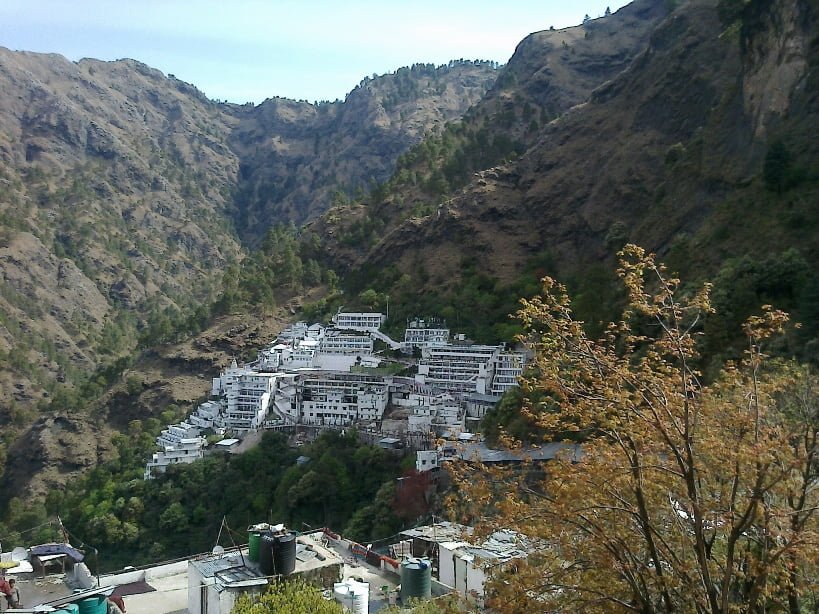
The temple is named after Vaishno Mata, an incarnation of Goddess Parvati. But, there is no specific idol here. Devotees worship three natural stone formations called Pindies. They are the forms of Maa Saraswati, Maa Lakshmi, and Maha Kali. This temple is considered powerful, and the deity is known to bless the childless couple with children. This temple draws Rs 500 crore per annum in the form of donations.
The Golden Temple, Punjab
The most revered place for Sikhs, the Amritsar Golden Temple is another richest temple in India. The temple is built in 400 kg gold and silver in hundreds of kgs.

Estimates say that around 40000- 1,00,000 devotees visit this place of worship every day. The Holy Granth of Sikhs adorned with precious gems is worshipped here. The temple has the biggest kitchen in India that satiates the hunger of thousands of devotees every day. This temple is a few meters away from Jallianwala Bagh.
Also Read: What is Hanuman Jayanthi? What is the importance of Hanuman Jayanthi?
Kashi Vishwanath Temple, Uttar Pradesh
Kashi Vishwanath temple is a world-famous temple for Hindus that draws 2 lac foreign visitors every year. It is one of the most revered places for Hindus and devotees believe that dying in this sacred town will free them from rebirth.

Every day many human corpses are burnt on the ghats here and the ashes are mixed in the Holy Ganga flowing beside them. The revenue of the temple is around 4-5 crores per annum. The temple also has much gold in its reserve and 2 of the 3 temple domes are covered in gold as well.
Related: Fascinating Legends about Varanasi Ghats
Kamakhya Devi Temple, Assam
Ranking as the significant temple for Goddess Durga devotees, Kamakhya Temple in Assam is one of the richest temples in India. It is one of the Shakti Peethas of Goddess Parvati. Every year lakhs of visitors visit Kamakhya Devi. The rush increases when the temple reopens after the three-day closure in Ashada month every year.

According to a Telegraph report, this Ambubachi mela draws more than 10 lakh visitors, including tantric, sadhus, and tourists. The average devotee count of this temple is around 35 lakh every year. The revenue of the Kamakhya temple reaches 5-6 crore per day when the devotee count is at its peak.
Puri Jagannath Temple, Odisha
One of the Char Dham places and the abode of Lord Shri Jagannatha, Puri is one of the richest temples in India. Not only during the car festival or the Rath Yatra, Puri also draws the attention of global tourists for its wondrous architecture and religious significance throughout the year.
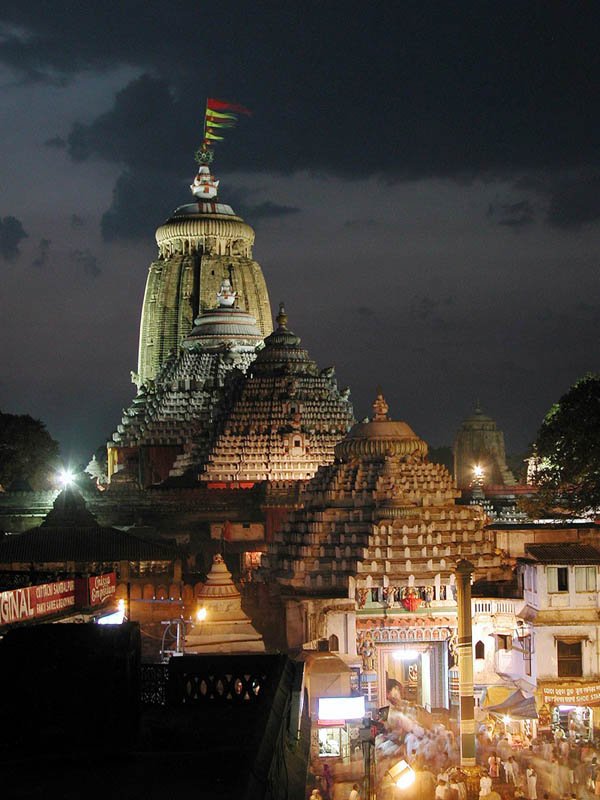
Similar to the Anantha Padmanabha temple, the Puri temple is also known for its hidden treasures. According to sources, it has 7 secret chambers with immense treasure. Out of these, only 2 were opened to date. In addition to this, the temple also draws revenue of 50 crores per annum, making Puri temple another richest temple in India.
The deity here is popular as Patita Pavana, meaning the Reviver of the Underprivileged. Puri temple is one of the attractions in the Golden Triangle of Odisha along with Konark and Bhubaneswar.
Somnath Temple, Gujarat
Those who know the history of the invasions in India will know the legends around Gujrat Somnath temple. The temple repeatedly faced Islamic invasions owing to its immense wealth. Mohammed Ghazni invaded this temple 17 times and looted tons of gold, silver, and many prized possessions. Despite this, the temple still makes it to list the richest temples in India.
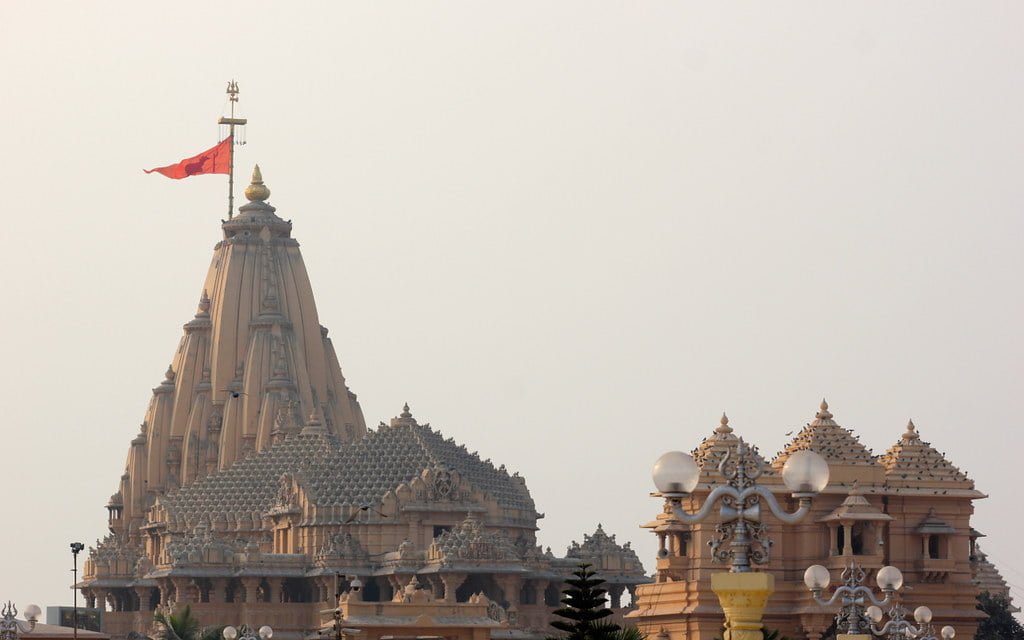
Devotees worship Lord Shiva here in his form of Somnath, meaning the Caretaker of the Moon God. Its location on the shore, the marvelous construction, and the religious significance draw as many as 45 lakh tourists every year.
Siddhi Vinayak Temple, Maharashtra
Trusted by many celebrities and common men alike, Siddhi Vinayak Temple in Mumbai is another richest temple in India. Businessmen, Bollywood celebrities, and foreigners donate to this temple profusely. The deity here – Lord Ganesha, is famous as the remover of obstacles.
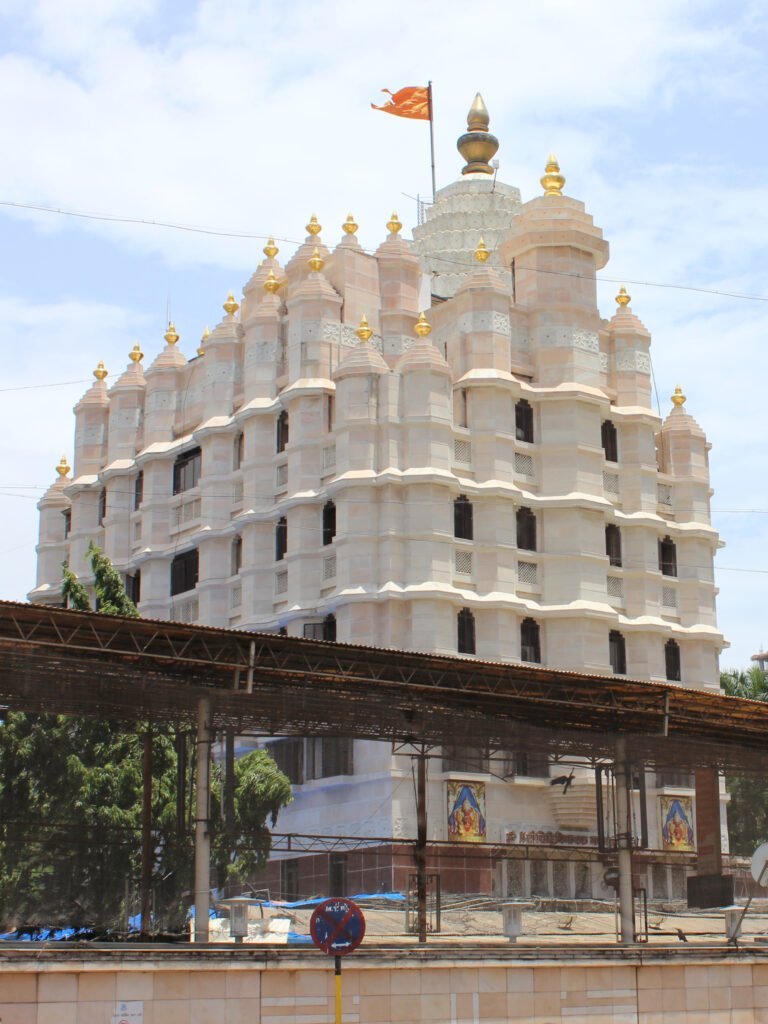
Devotees can reach as much as one lakh per day during special celebrations such as Ganesh Chaturthi. On other days, the devotee count lies in the tens of thousands. It is another rich temple in India with hefty bank deposits of around 125 crores. The temple receives donations of more than 100 crores per annum.
Shirdi Sai Baba Temple, Maharashtra
Shirdi is the most sacred place for the worshippers of Saibaba, a preacher and a person with miraculous powers. The throne on which the Saibaba idol is placed weighs around 94 kg of gold.

Businessmen, celebrities, and devotees from across the world donate to this temple in huge amounts. The throne itself costs 100 million rupees as per estimates. The main feature of this temple is that devotees of any religion and caste can visit and worship Saibaba. Authorities at the Shirdi Saibaba Sansthan share their annual income of around 300 crores. It also has huge real estate, bank deposits, and gold reserves.
Sabarimala Ayyappa Temple, Kerala
Sabarimala temple is another richest temple in India. Known for its sanctity and not allowing women into the temple, Sabarimala is also one of the most powerful temples, according to devotees. The Ayyappa Deeksha (a 45-day observance) that devotees take up has the strictest rituals and terms. They complete the Deeksha by taking the darshan of Lord Ayyappa, the deity here.

The time of Makara Jyoti or Makaravilakku is considered most sacred according to this temple tradition. This occurs during Sankranti (January) in India, where devotees believe that Lord Ayyappa appears as a celestial fire in the sky amidst Pamba forests and blesses humankind.
Male devotees from foreign and India flock to this temple to take darshan of Ayyappan. It is estimated that the revenue of this temple is more than 200 crores per annum, making it the richest temple in India and Kerala.
Swaminarayan Akshardham Temple, Delhi
This rich temple in India located in New Delhi is the youngest on the list. It was constructed by 11,000 artisans and thousands of Bochasanwasi Shri Akshar Purushottam Swaminarayan Sanstha (BAPS) volunteers.
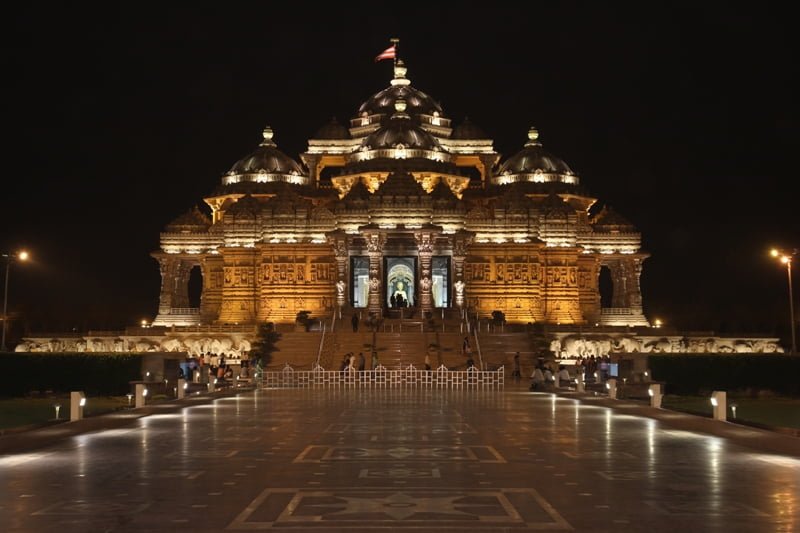
The temple has been open to visitors since 2005. Its architecture and the sprawling campus are a treat to the eyes of devotees. The deity in this temple is Swamy Narayan, a form of Lord Vishnu. This temple in the capital city of India is one of the most visited temples in the country. The idol of Swami Narayan inside the temple is made of pure gold. The temple also receives crores of revenue in the form of donations.
Guruvayoor Temple, Kerala
Located in Guruvayoor, a pleasant town in Kerala, the Guruvayoor temple is one of the richest temples in India. According to sources, the revenue of the temple is around 50 crore per annum.
Devotees worship and adore Lord Krishna, the main deity here. This temple is renowned for its treasures too. Priests say that the temple treasure has as much as 600kg in gold. The Guruvayoor temple is also famous for its 33.5-meter gold plate flagstaff (dhwaja stambha) that devotees touch and take divine blessings.
The Kolhapur Mahalakshmi Temple, Maharashtra
The Goddess of Kolhapur temple is Sri Mahalakshmi, known as the Goddess of Wealth in Hinduism. The temple attracts a pilgrim footprint of around 1 lakh on festive days.
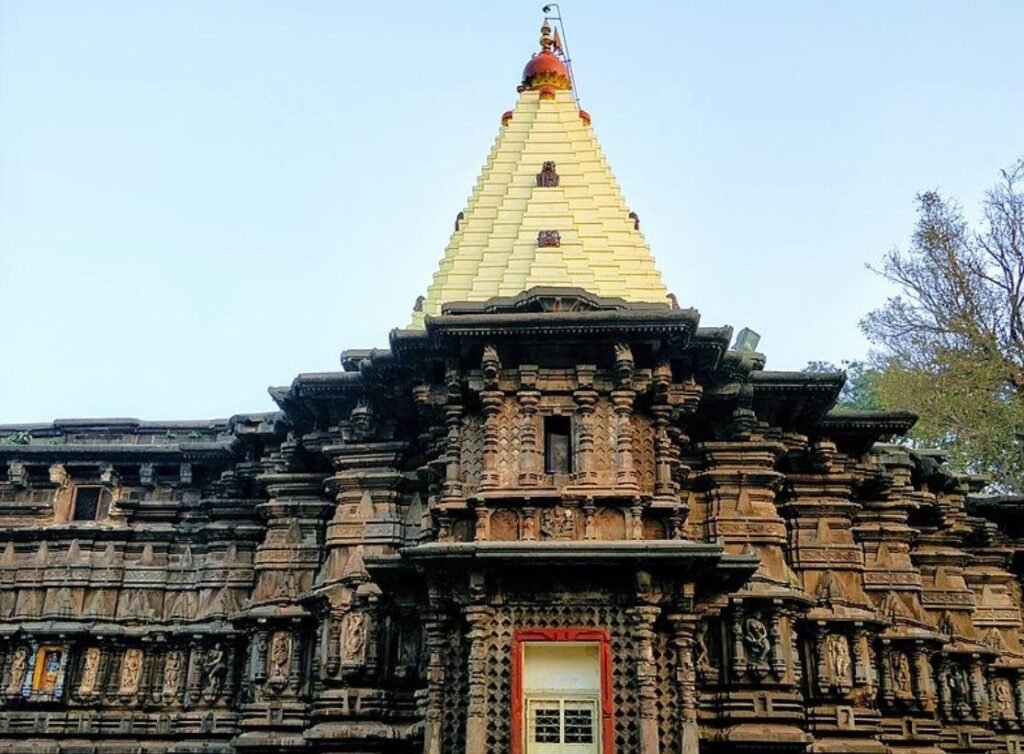
This richest temple in India has a revenue of 14 crores during the accounting year 2013-14, according to reports. The idol of Mahalakshmi is made of Blackstone and looks powerful and dazzling in the gold ornaments that adorn her.
Amarnath Temple, Jammu
A cave temple located in the snow peaks of Jammu, Amarnath temple is an abode of Lord Shiva. Reaching this temple is tough, and it is not open to devotees throughout the year.
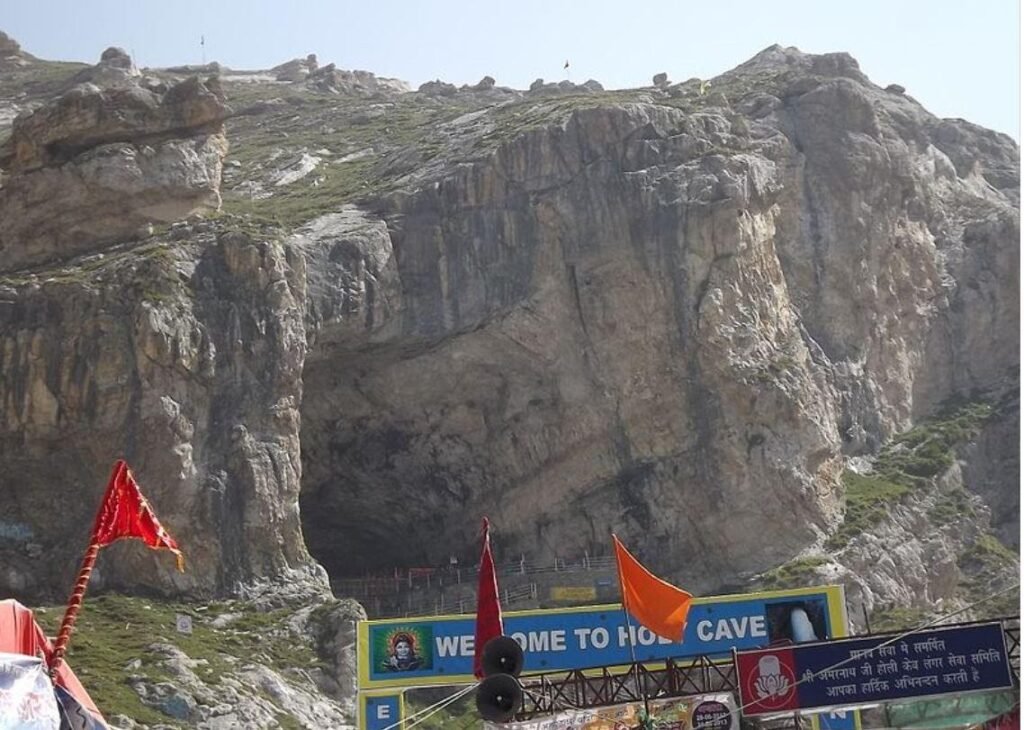
The world-famous Amarnath Yatra that occurs during the Shravan month according to the Indian lunar calendar draws revenue of more than 20,000 crores to the Jammu and Kashmir government. The snow-formed Shiva linga gives its darshan to devotees at this time. With the onset of the monsoon, the temple remains closed for devotees.
Lingaraj Temple, Odisha
The Lingaraj temple is another main attraction of Puri, Odisha. Lord Shiva is worshipped in this temple in the name of Lingaraj. The Shiva Linga here is believed to be Swamyabhuvu. While the temples receive 6000 visitors per day, on occasions like Shiva Ratri, the number of devotees reaches lakhs. The temple is open only to Hindus.

According to temple sources, the annual revenue of Lingaraj temples is 1.2 million per year. Additionally, the temple receives crores via rent from the shops and services offered on the temple premises.
Mahabodhi Temple, Bihar
This temple is one of the holy sites associated with Lord Gautama Buddha. This temple made its entry into the list of richest temples in India in 2013-14.
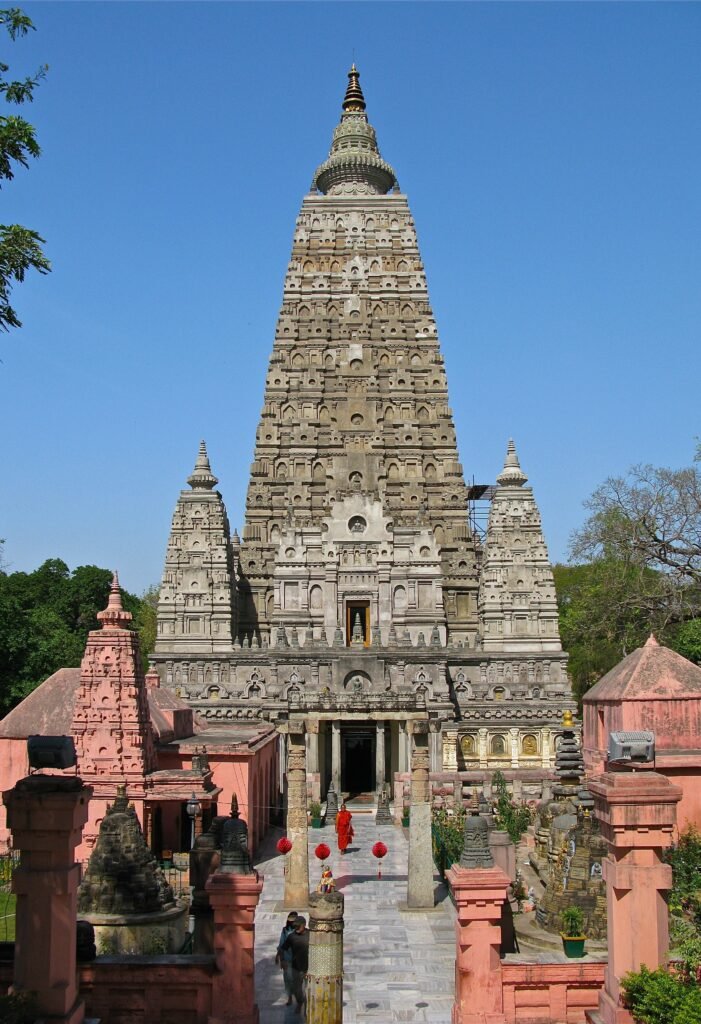
The annual donations the temple received in this financial year were 106 crore rupees. This includes donations and interest from fixed deposits. Millions of visitors from across the world visit this 1500-year-old richest temple of India every year.
Lotus Temple, Delhi
With a captivating and unique construction in the shape of a Lotus flower, this temple is a popular tourist destination in Delhi. This temple signifies the Baha’i faith that teaches the essence of all the religions in the world.
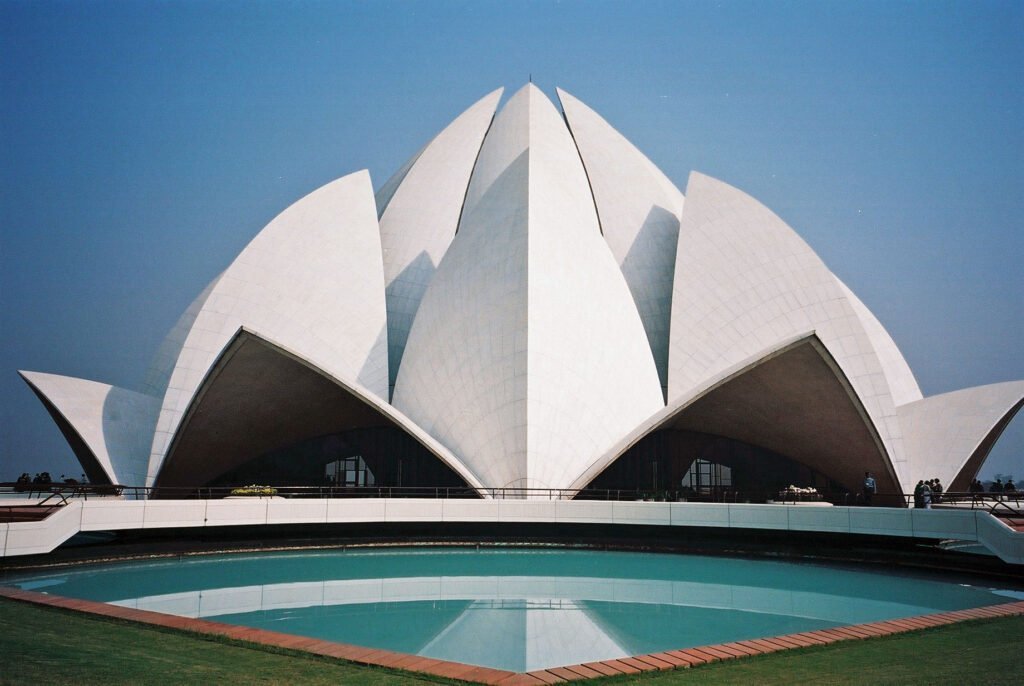
According to 2001 statistics, the Lotus temple is one of the most visited temples in India. This temple attracts tourists in lakhs every year, thanks to its stunning Iranian-style construction. The donations it receives from tourists and the net amount spent on its construction, make it one of the richest temples in India.
Palani Temple, Tamilnadu
Tamilnadu has the greatest number of temples in India. Interestingly, the state also has many rich temples. On this list is the Palani Dhandayuthapani temple, where the deity is Lord Subramanya. The temple is renowned for the unbeatable faith its devotees have in the deity.
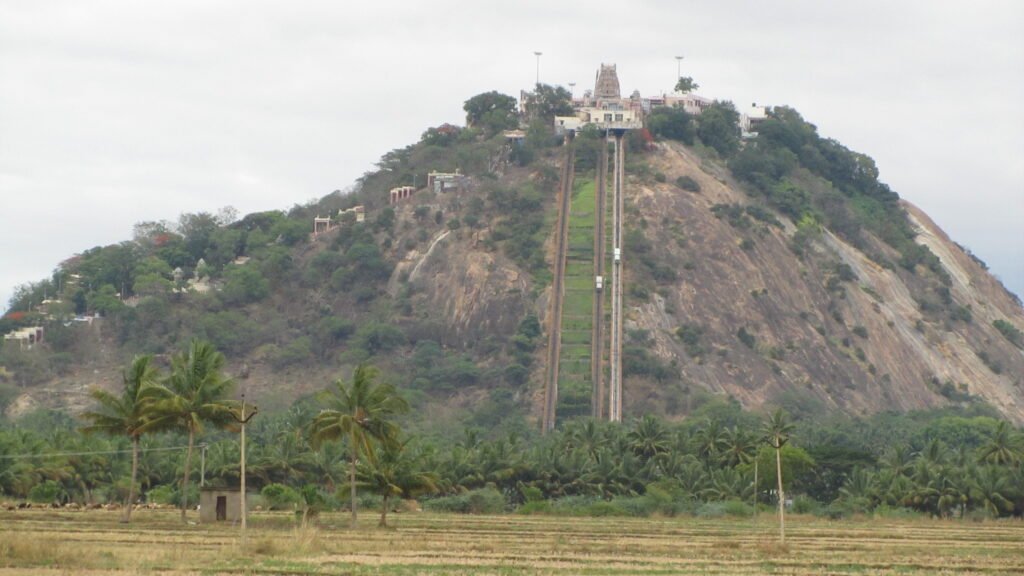
Every year 7 million pilgrims visit Palani to offer their gratitude to God. The temple is also a popular tourist spot owing to its location near the major temples of Tamilnadu.
Chidambaram Nataraja Swamy Temple, Tamilnadu
One of the Pancha Linga Kshetras of Lord Shiva, Chidambaram is the holy place where Space Linga is present. Lord Shiva appears in the form of an invisible form! All that you see is a curtain and the emptiness that contains the mystical form of Shiva. This is popularly known as Chidambara Rahasyam (The Mystery of Chidambaram).
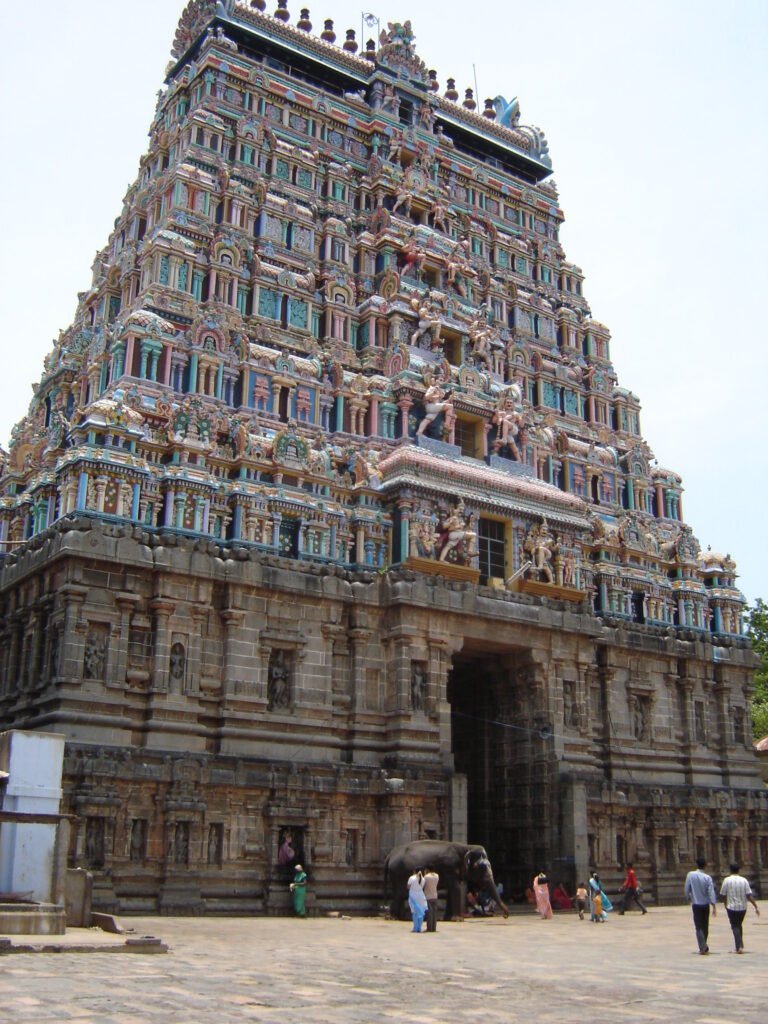
The temple attracts thousands of tourists every day. On days like Shiva Ratri, the number touches lakhs. Foreign tourists visit this temple to be charmed with its construction and the mysticism of God here. The location of the sanctum Sanctorum coincides with the magnetic equatorial point of the Earth. With the lakhs of donations it receives from the devotees, this is another richest temple in India and Tamilnadu.
Chottanikkara Temple, Kerala
One of the mystic temples devoted to Goddess Bhagavathy, the Chottanikkara temple in Kerala is a world-famous temple. Located in Kochi, the deity in this temple is worshipped as Mahasarawati in the morning, Mahalakshmi in the noon, and Maa Durga in the night.

The temple is known for its healing powers that can even cure people suffering from mental illnesses. Devotees donate crores of rupees to this temple as a token of gratitude to the Goddess Bhagavathi.
Rameswaram Ramanatha Temple, Tamilnadu
Considered among the most sacred places in Hinduism, the Ramanath Swamy temple in Rameswaram is known for its various specialties. The temple has the longest corridor in the world. Hindus conduct the final rites of their ancestors and deceased in the sea waters here.

The Shiva Linga here is said to be installed by Lord Ram himself. It is also one of the Dwadasa Jyotirlingas of Lord Shiva. Besides, this is one of the temples every Hindu wishes to visit at least once in their lifetime.
As per 2011 statistics, the Rameswaram temple received 97.58 lakh devotees in that year. The donation offered by the devotees and the immense gold deposits of the deity here adds this temple to the list of the richest temples in India.
The Prabhadevi temple, Maharashtra
Another richest temple of Maharashtra and India, the Prabhadevi Mandir receives 75 crores per annum in various forms. The temple is an abode of Shakamabari Devi or Prabhadevi and dates back to more than 300 years. With its high tourist footprint and the amount received as donations, this is another rich temple in India.
Takeaways
Some aspects of life should be looked at in the big picture to appreciate their real meaning. The riches and the donations received by these temples in India fall in this category.
While marveling at the riches of these temples, one should remember that the temples perform countless social responsibility acts too. Pilgrim amenities, food donations, maintenance of hospitals and schools, and paying for the thousands of staff serving the temple and the devotees all accounted for temple revenue.
God never asks for donations. Devotees give them voluntarily, be it out of fear or respect for the deity. But the main point is, that it is a voluntary donation. Additionally, the gems and gold were the gifts of rulers who built the temples and acted as their caretakers.
In the end, the temples use these donations for various humanitarian activities that we cannot do individually. By donating to the temples, we are contributing to the betterment of humankind.
We may not be able to make a difference with 100 rupees as a single person. But when millions of devotees donate 100 rupees to a temple, they turn into crores imparts them the superpower to serve the needy and fill the empty stomachs of millions of people.

